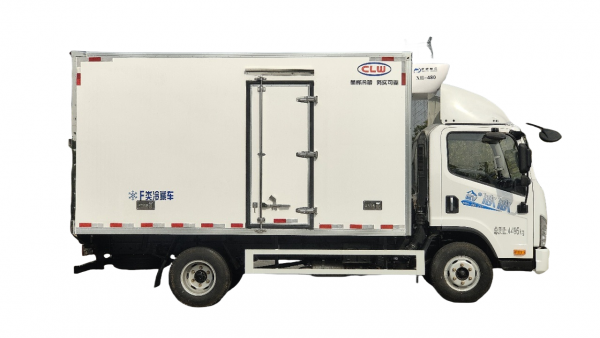Introduction (Word count: 300)
Crane trucks are versatile and essential machines used in various industries, from construction and logistics to oil and gas. These vehicles combine the mobility of a truck with the lifting capabilities of a crane, making them indispensable for heavy lifting and material handling tasks. However, the safe and efficient operation of a crane truck relies heavily on understanding and adhering to load charts.
This article aims to provide a comprehensive understanding of crane truck load charts, their importance, how to interpret them, and the factors that influence lifting capacities. By familiarizing ourselves with load charts, operators can optimize lifting capacities while ensuring safety remains a top priority.
1. Understanding Crane Truck Load Charts (Word count: 500)
1.1 What is a Load Chart?
A load chart is a graphical representation that outlines a crane truck's lifting capacities based on various factors such as boom length, angle, and configuration. It provides operators with crucial information about the maximum weight a crane can safely lift at different boom lengths and angles. Load charts are typically provided by crane manufacturers and are specific to the model and configuration of the crane truck.
1.2 Importance of Load Charts
Load charts serve as an essential reference tool for crane operators, ensuring safe and optimized lifting operations. By following the load chart guidelines, operators can avoid overloading the crane, preventing accidents, equipment damage, and potential injuries to personnel. Understanding load charts also helps in planning and strategizing lifting operations, ensuring maximum efficiency and productivity.
2. Interpreting Crane Truck Load Charts (Word count: 800)
2.1 Components of a Load Chart
Load charts consist of several key components that provide information about the crane's lifting capacities. These include boom length indicators, load radius, boom angle, and various load capacity charts. Understanding each component is crucial for interpreting load charts accurately.
2.2 Boom Length Indicators
Boom length indicators are typically displayed on the crane truck's boom and provide operators with a visual representation of the current boom length. By aligning the boom length indicator with the corresponding value on the load chart, operators can determine the crane's maximum lifting capacity at that specific length.
2.3 Load Radius
The load radius refers to the horizontal distance between the crane's center of rotation and the load being lifted. It is a critical factor in calculating the crane's lifting capacity. Load charts usually provide load radius values at different boom lengths and angles, allowing operators to determine the maximum weight they can lift at specific radii.
2.4 Boom Angle
The boom angle determines the vertical angle of the crane's boom. Load charts often display boom angle values alongside the corresponding load capacities. By considering the boom angle and aligning it with the appropriate value on the load chart, operators can determine the crane's lifting capacity under specific angles.
2.5 Load Capacity Charts
Load capacity charts are the core component of a load chart. They provide detailed information about the crane's lifting capacities at different boom lengths, angles, and load radii. These charts are presented in tabular or graphical form, making it easier for operators to quickly reference the crane's capabilities under various working conditions.

3. Factors Affecting Lifting Capacities (Word count: 900)
3.1 Crane Configuration
Different crane configurations, such as telescopic or lattice boom, have varying lifting capacities. Understanding https://www.worktruckmaker.com/wp-content/uploads/2024/07/微信图片_20240702163309-1024x578.png of the crane truck and referring to the appropriate load chart for that specific configuration is crucial to ensure safe and efficient operations.
3.2 Boom Length
The length of the crane's boom significantly impacts its lifting capacity. As the boom extends, the lifting capacity decreases due to factors such as increased load radius and reduced stability. Operators must refer to the load chart to determine the maximum weight they can lift at different boom lengths.
3.3 Boom Angle
The boom angle also affects the lifting capacity of the crane truck. Higher boom angles reduce the crane's capacity due to increased load radius and decreased stability. By referring to the load chart, operators can identify the crane's maximum lifting capacity at different boom angles.
3.4 Outriggers/Stabilizers
The deployment and positioning of outriggers or stabilizers are crucial for ensuring the stability and lifting capacity of the crane truck. Load charts often provide information on the maximum allowable load on each outrigger, guiding operators in deploying and positioning them correctly to optimize lifting capacities.
4. Safe Crane Truck Operations (Word count: 500)
4.1 Pre-Operation Inspection
Performing a thorough pre-operation inspection is essential to identify any potential issues or malfunctions that could compromise the crane truck's lifting capacity and overall safety. Operators should inspect critical components such as the boom, hydraulic systems, outriggers, and load-bearing structures before commencing any lifting operations.
4.2 Operator Training and Certification
Proper operator training and certification are imperative to ensure safe and efficient crane truck operations. Operators should receive comprehensive training on load charts, interpreting load capacities, and understanding the factors that influence lifting capacities. Regular refresher courses and staying updated on industry best practices are essential for maintaining a high level of competence.
4.3 Communication and Planning
Effective communication and meticulous planning are vital for safe crane truck operations. Prior to lifting operations, operators should communicate with the team involved, including riggers, spotters, and supervisors, to ensure everyone understands the load requirements, lifting procedures, and safety protocols.
Conclusion (Word count: 200)
Crane truck load charts are indispensable tools for optimizing lifting capacities while ensuring the safety of personnel and equipment. By understanding load charts, interpreting them accurately, and considering the factors that influence lifting capacities, operators can conduct safe and efficient lifting operations. Adhering to load chart guidelines, performing pre-operation inspections, and maintaining proper training and certification are essential steps towards mitigating risks and achieving successful crane truck operations.
